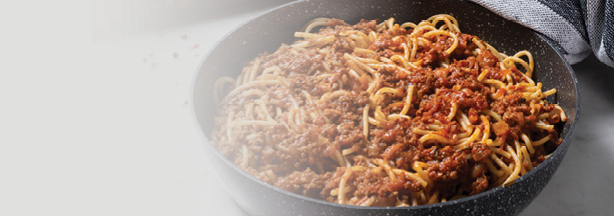Shake the Salt Habit When You Have Kidney Disease
Provided by DaVita® Dietitians
Everyone needs a little flavor in their life, but for those with chronic kidney disease (CKD), having too much salt in the diet can be harmful to the body. Unhealthy kidneys are not able to eliminate excess sodium (salt) and fluid from the body. In addition, sodium is linked to high blood pressure that can cause even more damage to ailing kidneys. You can take preventative measures by shaking your salt habit. Consult with your renal dietitian to determine how much sodium you can safely have each day.
Here are some tips to reduce the amount of salt in your diet:
- Limit salty snack foods such as salted chips, pretzels, crackers and popcorn.
- Read labels on canned and frozen vegetables (many have added sodium).
- Processed foods tend to be loaded with sodium. Instead, buy fresh, natural foods whenever possible.
- Limit how often you eat at fast food restaurants, since the food is typically high in sodium.
- Use salt-free seasonings such as Mrs. Dash® herb seasoning blends.
- Season food with lemon juice, fresh or dried herbs and spices.
Another tactic to shaking the habit is to remove your salt shaker from your table. You’ll be less apt to reach for it if it’s not right at hand. Remember that even small amounts of table salt are loaded with sodium:
- 1/4 tsp salt = 575 mg sodium
- 1/2 tsp salt = 1150 mg sodium
- 1 tsp salt = 2300 mg sodium
Shake high-sodium foods
People with kidney disease should learn which foods are high in sodium. Once you know, you can limit the foods or avoid them altogether. Below is a list of high-sodium foods and seasonings you should think about shaking.
- Baking mixes
- Bottled salad dressings
- Bouillon cubes and granules
- Buttermilk
- Condiments such as catsup, chili sauce, steak sauce, prepared mustard, Worcestershire sauce, soy sauce, barbecue sauce, horseradish and salsa
- Cured meats, including ham, bacon, sausage and luncheon meats (bologna, corned beef, pepperoni, pastrami and salami)
- Dehydrated, canned and frozen soups and broths
- Fish or shellfish in salt
- Frozen dinners with more than 700 mg sodium per serving
- Instant cocoa mixes
- Meat tenderizers and marinades
- Most cheeses
- Pickled or processed in brine, including olives, pickles, relish
- Pizza and lasagna
- Salted nuts, seeds and snack mixes
- Seasoning salts, flavored salts, kosher salt and sea salt
Read the labels
Read food labels when grocery shopping. Key words that indicate that a food may be high in sodium or have ingredients that contain sodium include:
|
Baking powder |
Baking soda |
|
Brine |
Disodium phosphate |
|
Hydroxide |
Monosodium glutamate (MSG) |
|
Salt |
Sodium |
|
Sodium benzoate |
Sodium nitrite |
|
Sodium propionate |
Sodium sulfite |
Herb up your meals
Herbs are a great way to add flavor to your meals without adding salt. Below is a guide to herbs and the foods they complement.
Herbs and spices for flavoring meats, poultry, fish and seafood
|
Basil |
Cilantro |
|
Cumin |
Curry powder |
|
Dill leaves and seed |
Garlic powder |
|
Marjoram |
Onion powder |
|
Oregano |
Paprika |
|
Parsley flakes |
Pepper: black, red and white |
|
Rosemary |
Sage |
|
Tarragon |
Thyme |
Herbs and spices for flavoring vegetables
|
Allspice |
Basil |
|
Caraway seed |
Celery seed |
|
Cumin |
Curry powder |
|
Dill leaves or seeds |
Ginger |
|
Horseradish root |
Mace |
|
Marjoram |
Mint |
|
Mustard |
Nutmeg |
|
Onion powder |
Oregano |
|
Paprika |
Parsley flakes |
|
Pepper: black, red and white |
Rosemary |
|
Savory |
Tarragon |
|
Thyme |
Turmeric |
Buying and storing fresh herbs
Most fresh herbs can be found in your local supermarket. Choose herbs that are clean, fresh and fragrant, with no signs of wilting or browning. Store bunches in your refrigerator with their stems in water. Loose leaves are best kept in the coldest part of a refrigerator in perforated bags.
Some moisture is good for fresh herbs. Too much moisture promotes decay. Shake them as dry as possible before storing. It’s a good idea to loosely wrap herbs in a paper towel to absorb excess moisture. Then, place in a plastic bag to help lengthen the useful life of the herbs.
If available, buy fresh growing herbs like basil, cilantro, oregano and rosemary in a planter and keep in the kitchen to trim and use as needed. Frequent watering will keep the plants growing and available for a long time.
Seasoning strength
Fresh herbs may have more or less flavor than dried ones. Dried herbs have had some of their flavor elements concentrated, and so they can seem stronger. But drying herbs causes some other tastes to be lost. The general ratio to use when substituting fresh herbs for dried is 3 to 1. That is, if a recipe calls for dried herbs and you are using fresh, you’ll need three times as much of the fresh herbs as the recipe states.
- Strong herbs: bay leaves, cardamom, curry, ginger, hot peppers, mustard, pepper, rosemary and sage
- Medium herbs: basil, celery seed, cumin, dill, fennel, garlic, marjoram, mint, oregano, savory, thyme, turmeric
- Delicate herbs: burnet, chervil, chives, parsley
Summary
The kidney diet typically is low in sodium (salt). Most people use salt as a seasoning on their food, but there are many flavorful — and kidney-friendly — alternatives. Put away your salt shaker and try using different seasonings to flavor your food, both while cooking and at the table. It will be better for your health, and once you adjust to new flavors, you won’t miss your salt habit.
Related articles on DaVita.com

Download
Cookbooks
Access free kidney-friendly cookbooks from DaVita dietitians.
1,000,000+ Enjoyed So Far!

Eating Out
Guides
See kidney-friendly food and drink choices to consider when eating out at your favorite restaurants. Choose from 12 cuisine types.
